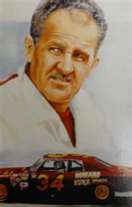 There are millions of NASCAR fans all over the world but do you know that the first NASCAR driver was Wendell Oliver Scott from Danville, Virginia. History has recorded Scott as the only black driver to win a race in what is now the Sprint Cup Series. He could be compared to Jackie Robinson in the sense that he broke the color barrier in Southern stock car racing. The memorable day occurred on May 23, 1952, at the Danville Fairgrounds Speedway.
There are millions of NASCAR fans all over the world but do you know that the first NASCAR driver was Wendell Oliver Scott from Danville, Virginia. History has recorded Scott as the only black driver to win a race in what is now the Sprint Cup Series. He could be compared to Jackie Robinson in the sense that he broke the color barrier in Southern stock car racing. The memorable day occurred on May 23, 1952, at the Danville Fairgrounds Speedway.
Scott gained experience and winning some local races at various Virginia tracks before becoming the first African-American to obtain a NASCAR racing license. It is unclear when the license was issued in 1953, although NASCAR does not have the exact date. As you can imagine, Scott’s career was repeatedly affected by racial prejudice and problems with top-level NASCAR officials. However, his determined struggle as an underdog won him thousands of white fans and many friends and admirers among his fellow racers.
It is said from the day was born he wanted to be his own boss. In Danville, two industries dominated the local economy: cotton mills and tobacco-processing plants. Scott vowed to avoid that sort of boss-dominated life. He once said, “The mill’s looked too much like a prison. You go in and they lock a gate behind you and you can’t get out until you’ve done your time”. From boyhood, Scott raced bicycles against white boys. In his neighborhood, he said, “I was the only black boy that had a bicycle.” He became a daredevil on roller skates, speeding down Danville’s steep hills on one skate.
He ran an auto-repair shop. As a sideline and for fun, he took up the dangerous, illegal pursuit of running moonshine whiskey. This trade gave quite a few early stock car racers their education in building fast cars and outrunning the police. The police caught Scott only once, in 1949. Sentenced to three years probation, he continued making his late-night whiskey runs. On weekends, he would go to the stock car races in Danville, sitting in the blacks-only section of the bleachers, and he would wish that he too could be racing on the speedway.
Scott was thirty years old at the approximate times when he was sitting in the bleachers of local speedways, watching white men race. Up to then, he had lived his whole life under the rigid rules of segregation. He could neither use a white bathroom or a white drinking fountain nor eat at a white restaurant. Nothing in his past had prepared him for the unusual, life-changing experience that was about to take place.
The Danville races were run by the Dixie Circuit, one of several regional racing organizations that competed with NASCAR during that era. Danville’s events always made less money than the Dixie Circuit’s races at other tracks. “We were a tobacco and textile town — people didn’t have the money to spend,” said Aubrey Ferrell, one of the organizers. The officials decided they would try an unusual, and unprecedented, promotional gimmick: They would recruit a Negro driver to compete against the “good ol’ boys.”
To their credit, they wanted a fast black driver, not just a fall guy to look foolish. They asked the Danville police who was the best Negro driver in town. The police recommended the moonshine runner whom they had chased many times and caught only once. Scott brought one of his whiskey-running cars to the next race, and Southern stock car racing gained its first black driver.
Some spectators booed him, and his car broke down during the race. But Scott realized immediately that he wanted a career as a driver. The next day, however, brought the first of many episodes of discrimination that would plague his racing career. Scott repaired his car and towed it to a NASCAR-sanctioned race in Winston-Salem, North Carolina. But the NASCAR officials refused to let him compete. Black drivers were not allowed, they said. As he drove home, Scott recalled, “I had tears in my eyes.”
A few days later he went to another NASCAR event in High Point, North Carolina. Again, Scott said, the officials “just flat told me I couldn’t race. They told me I could let a white boy drive my car. I told ’em weren’t no damn white boy going to drive my car.” Scott decided to avoid NASCAR for the time being and race with the Dixie Circuit and at other non-NASCAR speedways. He won his first race at Lynchburg, Virginia, only twelve days into his racing career. It was just a short heat race in the amateur class, but for Scott, the victory was like a barb on a hook. He knew that he had found his calling.
He ran as many as five events a week, mostly at Virginia tracks. Some spectators would shout racial slurs, but many others began rooting for him. Some prejudiced drivers would wreck him deliberately. They “just hammered on Wendell,” former chief NASCAR photographer T. Taylor Warren said. “They figured he wasn’t going to retaliate.” And they were right–Scott felt that because of the racial atmosphere, he could not risk becoming involved in the fist-fights and dirty-driving paybacks that frequently took place among the white drivers.
Many other drivers, however, came to respect Scott. They saw his skills as a mechanic and driver, and they liked his quiet, uncomplaining manner. They saw him as someone similar to themselves, another hard-working blue-collar guy swept up in the adrenalin rush of racing, not somebody trying to make a racial point. “He was a racer — you could look at somebody and tell whether they were a racer or not,” said driver Rodney Ligon, who was also a moonshine runner. “Didn’t nobody send him [to the track] to represent his race — he come down because he wanted to drive a damn racecar.” Some white drivers became his close friends and also occasionally acted as his bodygards.
Some Southern newspapers began writing positive stories about Scott’s performance. He began the 1953 season on the northern Virginia circuit, for example, by winning a feature race in Staunton. Then he tied the Waynesboro qualifying record. A week later he won the Waynesboro feature, after placing first in his heat race and setting a new qualifying record. The Waynesboro News Virginian reported that Scott had become “recognized as one of the most popular drivers to appear here.” The Staunton News Leader said he “has been among the top drivers in every race here.”
In 1961, he moved up to the NASCAR Grand National (now Sprint Cup) division. In the 1963 season, he finished 15th in points, and on December 1 of that year, driving a Chevy Bel Air and won a race on the one-mile dirt track at Speedway Park in Jacksonville, Florida becoming the first and to date only top level NASCAR event won by an African-American. Scott was not announced as the winner of the race at the time, presumably due to the racist culture of the time.
Ironically, the second-place driver, was initially declared the winner, but race officials discovered two hours later that Scott had not only won, but was two laps in front of the rest of the field. NASCAR awarded Scott the win two years later, but his family never actually received the trophy he had earned till 2010–37 years after the race, and 20 years after Scott had died.
He continued to be a competitive driver despite his low-budget operation through the rest of the 1960s. In 1964, Scott finished 12th in points despite missing several races. Over the next five years, Scott consistently finished in the top ten in the point standings. He finished 11th in points in 1965, was a career-high 6th in 1966, 10th in 1967, and finished 9th in both 1968 and 1969. His top year in winnings was 1969 when he won $47,451 ($300,723.94 in today’s money).
This is not unlike much of what the ghost of the greats had to endure but their sacrifice changed the sport and the world. And that’s my Thought Provoking Perspective…
(Resource: Wikipedia)

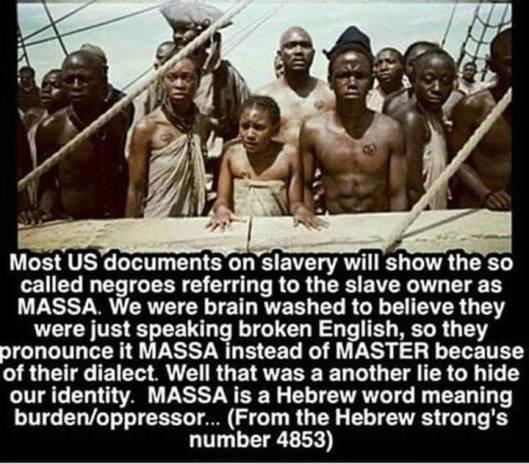


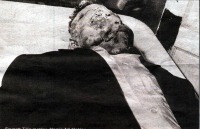 Throughout America’s sordid history, there have been many children murdered but the Murder in Money, Mississippi is the most infamous. It was this incident, the murder of a black child, fourteen year old Emmett Till that sparked the modern Civil Rights Movement. On August 28, 1955, Emmett Till, a fourteen-year-old black boy from Chicago supposedly whistled at a white woman in a grocery store.
Throughout America’s sordid history, there have been many children murdered but the Murder in Money, Mississippi is the most infamous. It was this incident, the murder of a black child, fourteen year old Emmett Till that sparked the modern Civil Rights Movement. On August 28, 1955, Emmett Till, a fourteen-year-old black boy from Chicago supposedly whistled at a white woman in a grocery store.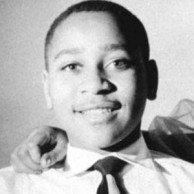
 Today, seemed like the saddest day of my life hearing that my hero passed away! I want to applaud the great Dick Gregory for the gift of his commitment, wisdom, and his genius! Dick Gregory, whose government name is Mr. Gregory was active in the civil rights movement from the beginning. He came to Selma, Alabama and spoke for two hours on a public platform two days before the voter registration drive known as “Freedom Day” (October 7, 1963). In 1964, Gregory became more involved in struggles for civil rights, activism against the Vietnam War, economic reform, anti-drug issues, conspiracy theories, and others. As a part of his activism, he went on several hunger strikes.
Today, seemed like the saddest day of my life hearing that my hero passed away! I want to applaud the great Dick Gregory for the gift of his commitment, wisdom, and his genius! Dick Gregory, whose government name is Mr. Gregory was active in the civil rights movement from the beginning. He came to Selma, Alabama and spoke for two hours on a public platform two days before the voter registration drive known as “Freedom Day” (October 7, 1963). In 1964, Gregory became more involved in struggles for civil rights, activism against the Vietnam War, economic reform, anti-drug issues, conspiracy theories, and others. As a part of his activism, he went on several hunger strikes.
 White folk always talk about their love of the Constitution as if it is God’s voice of right but the case of the Scottsboro Boy clearly demonstrates the hypocrisy in their hearts with regard to black people and jurisprudence. This kind of blindness in the law has been a staple in America from the beginning of the nation. This horrible story, which is true and documented began on March 26th, 1931, nine black youths riding a freight train, were arrested in Scottsboro, Alabama, after being falsely accused of raping two white women. After nearly being lynched, the Scottsboro Boys were brought to trial.
White folk always talk about their love of the Constitution as if it is God’s voice of right but the case of the Scottsboro Boy clearly demonstrates the hypocrisy in their hearts with regard to black people and jurisprudence. This kind of blindness in the law has been a staple in America from the beginning of the nation. This horrible story, which is true and documented began on March 26th, 1931, nine black youths riding a freight train, were arrested in Scottsboro, Alabama, after being falsely accused of raping two white women. After nearly being lynched, the Scottsboro Boys were brought to trial. This might be a harsh thing to say but I thought Charles Manson would be released from jail before OJ. Ok I was wrong! Yesterday the Juice was paroled bringing back the same outrage and vitriol from the past from white folk. Don’t be mistaken, regardless of what the law says “he will alway be guilty of killing this white woman”. It is the code that white folk live by and honor!
This might be a harsh thing to say but I thought Charles Manson would be released from jail before OJ. Ok I was wrong! Yesterday the Juice was paroled bringing back the same outrage and vitriol from the past from white folk. Don’t be mistaken, regardless of what the law says “he will alway be guilty of killing this white woman”. It is the code that white folk live by and honor!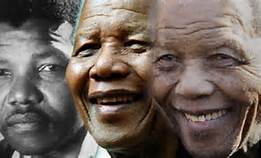
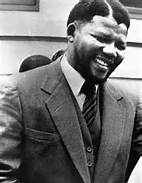
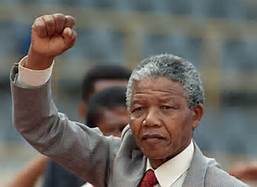
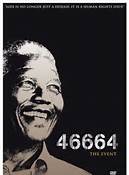
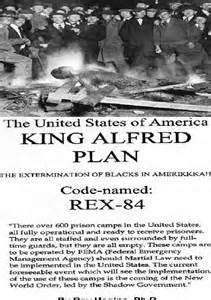






Remembering Our Greatest Scholar: John Henry Clarke
His mother was a washerwoman who did laundry for $3 a week and his father was a sharecropper. As a youngster Clark caddied for Dwight Eisenhower and Omar Bradley “long before they became Generals or President,” Clarke would later recount in describing his upbringing in rural Alabama.
Ms. Harris his third grade teacher convinced him that one day I would be a writer but before he became a writer he became a voracious reader inspired by Richard Wright’s Black Boy.a vertern who enlisted in the army and earned the rank of Master Sergeant. After mustering out, Clarke moved to Harlem and committed himself to a lifelong pursuit of factual knowledge about the history of his people and creative application of that knowledge. Over the years, Clarke became both a major historian and a man of letters.
His literary accomplishments were very significant but he was best known as a historian. He wrote over two hundred short stories with “The Boy Who Painted Christ Black” is his best known. Clarke edited numerous literary and historical anthologies including American Negro Short Stories (1966), an anthology which included nineteenth century writing from writers such as Paul Laurence Dunbar and Charles Waddell Chestnut, and continued up through the early sixties with writers such as LeRoi Jones (Amiri Baraka) and William Melvin Kelley. This is one of the classic collections of Black fiction.
Reflective of his commitment to his adopted home, Clarke also edited Harlem, A Community in Transition and Harlem, U.S.A. Never one to shy away from the difficult or the controversial, Clarke edited anthologies on Malcolm X and a major collection of essays decrying William Styron’s “portrait” of Nat Turner as a conflicted individual who had a love/hate platonic and sexually-fantasized relationship with Whites. In both cases, Clarke’s work was in defense of the dignity and pride of his beloved Black community rather than an attack on Whites.
What is significant is that Clarke did the necessary and tedious organizing work to bring these volumes into existence and thereby offer an alternative outlook from the dominant mainstream views on Malcolm X and Nat Turner, both of whom were often characterized as militant hate mongers. Clarke understood the necessity for us to affirm our belief in and respect for radical leaders such as Malcolm X and Nat Turner. It is interesting to note that Clarke’s work was never simply focused on investigating history as the past, he also was proactively involved with history in the making.
As a historian Clarke also edited a book on Marcus Garvey and edited Africa, Lost and Found (with Richard Moore and Keith Baird) and African People at the Crossroads, two seminal historical works widely used in History and African American Studies disciplines on college and university campuses. Through the United Nations he published monographs on Paul Robeson and W.E.B. DuBois. As an activist-historian he produced the monograph Christopher Columbus and the African Holocaust. His most recently published book was Who Betrayed the African Revolution?
In the form of edited books, monographs, major essays and book introductions, John Henrik Clarke produced well over forty major historical and literary documents. Rarely, if ever, has one man delivered so much quality and inspiring literature. Moreover, John Henrik Clarke was also an inquisitive student who became a master teacher.
During his early years in Harlem, Clarke made the most of the rare opportunities to be mentored by many of the great 20th century Black historians and bibliophile. Clarke studied under and learned from men such as Arthur Schomburg, William Leo Hansberry, John G. Jackson, Paul Robeson, Willis Huggins and Charles Seiffert, all of whom, sometimes quietly behind the scenes and other times publicly in the national and international spotlight, were significant movers and shakers, theoreticians and shapers of Black intellectual and social life in the 20th century.
From the sixties on, John Henrik Clarke stepped up and delivered the full weight of his own intellectual brilliance and social commitment to the ongoing struggle for Black liberation and development. Clarke became a stalwart member and hard worker in (and sometimes co-founder of) organizations such as The Harlem Writers Guild, Presence Africaine, African Heritage Studies Association, the Association for the Study of Negro Life and History, the National Council of Black Studies and the Association for the Study of Classical African Civilizations.
Formally, Clarke lectured and held professorships at universities worldwide. His longer and most influential tenures were at the Africana Studies and Research Center at Cornell in Ithaca, New York, and in African and Puerto Rican Studies at Hunter College in New York City. He received honorary degrees from numerous institutions and served as consultant and advisor to African and Caribbean heads of state. In 1997 he was the subject of a major documentary directed by the noted filmmaker Saint Claire Bourne and underwritten by the Hollywood star Westley Snipes.
John Henrik Clarke is in many ways exemplary of the American ethos of the self-made man. Indicative of this characteristic is the fact that Clarke changed his given name of John Henry Clark to reflect his aspirations. In an obituary he penned for himself shortly before his death, John Henrik Clarke noted “little black Alabama boys were not fully licensed to imagine themselves as conduits of social and political change. …they called me ‘bubba’ and because I had the mind to do so, I decided to add the ‘e’ to the family name ‘Clark’ and change the spelling of ‘Henry’ to ‘Henrik,’ after the Scandinavian rebel playwright, Henrik Ibsen.
I like his spunk and the social issues he addressed in ‘A Doll’s House.’ …My daddy wanted me to be a farmer; feel the smoothness of Alabama clay and become one of the first blacks in my town to own land. But, I was worried about my history being caked with that southern clay and I subscribed to a different kind of teaching and learning in my bones and in my spirit.”
Body and soul, John Henrik Clarke was a true champion of Black People. He bequeathed us a magnificent legacy of accomplishment and inspiration borne out of the earnest commitment of one irrepressible young man to make a difference in the daily and historical lives of his people.
Viva, John Henrik Clarke!
Resource: Black College Online
Share this:
1 Comment | tags: African American, black history, commentary, educatio, history, John Henry Clarke, news, scholar, truth, Uncategorized | posted in African American, black issues, blues, civil rights, education, GOP, history, Obama, Politics, racism